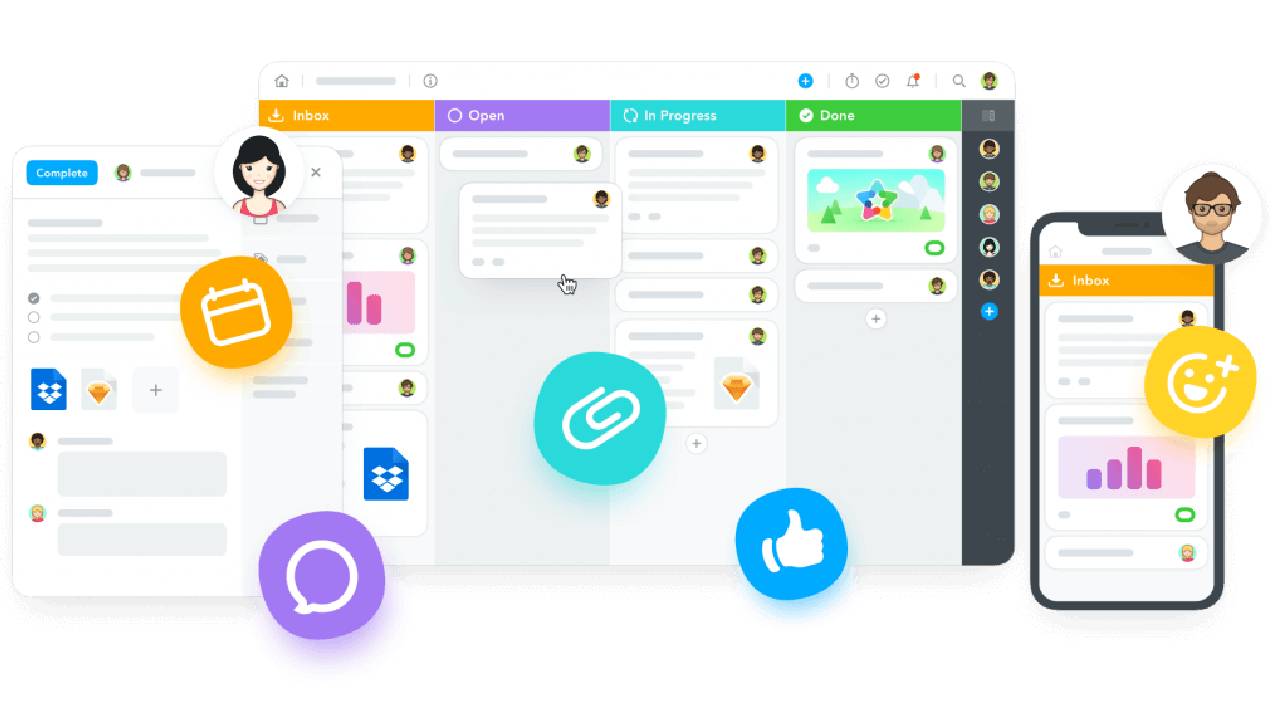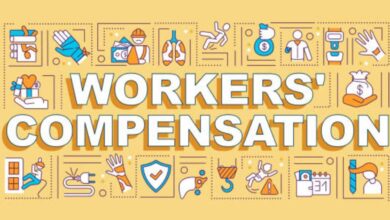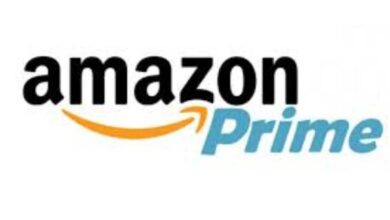25 Best Task Management Software in 2024
Explore, Compare, and Choose the Ideal Task Management Solution
Task Management Software has become an indispensable tool in today’s dynamic and fast-paced work environment. Aiming to streamline productivity and enhance collaboration, these platforms play a pivotal role in organizing and optimizing daily tasks.
The importance of Task Management Software lies in its ability to transform chaos into order, providing individuals and teams with a structured approach to accomplishing their goals.
As we step into 2024, the landscape of Task Management Software has undergone a remarkable evolution, adapting to the ever-changing needs of businesses and individuals alike. From simple to-do lists to sophisticated platforms integrating artificial intelligence, the journey of Task Management Software reflects a commitment to efficiency and innovation.
In this article, we will delve into the intricacies of the 25 Best Task Management Software in 2024, exploring their features, benefits, and the trends shaping work management’s future.
Whether you are a professional seeking to boost personal productivity or a team leader looking to optimize workflows, this comprehensive guide will navigate you through the landscape of Task Management Software to help you make informed choices tailored to your specific needs.
Criteria for Selection
In the vast landscape of Task Management Software, choosing the right platform for your needs requires careful consideration of specific criteria.
A successful selection process involves evaluating various aspects that contribute to the software’s effectiveness in enhancing productivity and collaboration.
From the user interface to integration capabilities and pricing structures, each criterion plays a crucial role in determining the suitability of Task Management software for your unique requirements.
User-Friendly Interface
The user interface is the gateway to efficient task management, influencing how seamlessly individuals and teams can navigate and utilize the software. Optimal Task Management Software prioritizes a user-friendly design, ensuring that users can intuitively grasp its features and functionalities.
A well-designed interface contributes to a positive user experience, reducing the learning curve and maximizing productivity. The best platforms offer clear navigation, visually appealing layouts, and customizable settings to cater to diverse user preferences.
Collaboration Features
Task Management Software is not just about individual productivity; it is equally vital for fostering team collaboration. The collaboration features of a platform determine its effectiveness in promoting communication, sharing ideas, and collective task accomplishment.
Robust collaboration tools may include real-time messaging, file sharing, and commenting functionalities, creating a centralized hub where team members can seamlessly interact and collaborate on tasks and projects.
Integration Capabilities
In today’s interconnected digital landscape, the ability of Task Management Software to integrate with other tools and platforms is paramount. Integration capabilities enhance workflow efficiency by allowing seamless data transfer between different applications.
Whether it’s syncing with calendar apps, communication tools, or project management platforms, Task Management Software with robust integration capabilities ensures a cohesive digital ecosystem, reducing the need for manual data entry and minimizing the risk of information silos.
Mobile Accessibility
In an era where work is not confined to a traditional office space, the importance of mobile accessibility cannot be overstated. Task Management Software should empower users to stay productive on the go, offering mobile applications that provide full functionality and a consistent user experience across devices.
Whether accessing task lists, updating progress, or receiving real-time notifications, mobile accessibility ensures that tasks can be managed efficiently, regardless of location.
Pricing and Plans
Understanding the pricing structure and available plans is a critical step in the selection process of Task Management Software. Different platforms offer pricing models, including subscription-based plans, freemium options, and enterprise-level packages.
Evaluating the cost relative to the features and scalability offered is essential to ensure that the chosen software aligns with budget constraints and provides value for the investment.
Additionally, considering any potential hidden costs and the flexibility to upgrade or downgrade plans as organizational needs evolve is key to making an informed decision.
See Also: How to Optimize Your Online Shop With Data Mining
Top Task Management Software in 2024
As we navigate the landscape of Task Management Software in 2024, it’s essential to highlight and explore the standout platforms that are shaping the way individuals and teams approach their daily workflows.
The following analysis delves into three leading Task Management Software solutions, each renowned for its unique features, functionality, and contribution to streamlining task-oriented processes.
ClickUp
ClickUp has emerged as a versatile and comprehensive Task Management Software, offering a centralized hub for teams to plan, collaborate, and execute tasks seamlessly. Its intuitive interface and customizable features cater to a wide range of users, from individual professionals to large enterprises.
Key Features:
ClickUp’s key features include task creation and assignment, goal tracking, document collaboration, and integration with various third-party applications. The platform’s flexibility allows users to adapt it to their preferred project management methodologies, making it a dynamic solution for diverse work environments.
Pros and Cons:
Stars incorporate a hearty list of capabilities, an easy-to-use point of interaction, and standard updates. However, a learning curve for new users and the requirement for customization to realize its full potential are potential drawbacks.
ProofHub
ProofHub is a project management and collaboration platform that integrates powerful Task Management features. Known for its simplicity and all-in-one approach, ProofHub serves as a central space for teams to manage tasks, projects, and communication efficiently.
Key Features:
ProofHub’s key features encompass task creation, time tracking, Gantt chart view, discussion boards, and file sharing. The platform emphasizes visual organization, allowing users to grasp project progress and task dependencies at a glance.
Pros and Cons:
Pros include easy collaboration, multiple project views, and comprehensive project management tools. While the platform excels in simplicity, some users may find it lacks certain advanced features present in more specialized tools.
Todoist
Todoist is a popular and user-friendly Task Management Software that focuses on simplicity without compromising functionality. Its minimalist design and cross-platform availability make it a go-to choice for individuals and teams seeking an accessible task management solution.
Key Features:
Todoist’s key features include task organization, priority setting, due dates, and project categorization. The platform’s straightforward approach to task management allows users to quickly capture and organize their to-dos.
Pros and Cons:
Pros include ease of use, seamless synchronization across devices, and a clean interface. However, users with complex project management needs may find Todoist lacking some advanced features present in more comprehensive solutions.
Any.do
Any.do is a user-centric Task Management Software that excels in simplicity and functionality. It offers an intuitive platform for organizing tasks, setting priorities, and collaborating seamlessly.
Key Features:
Key features of Any.do include a user-friendly interface, cross-platform synchronization, task categorization, and real-time collaboration. The platform integrates with various apps, providing a holistic approach to task management.
Pros and Cons:
A simple and easy-to-use design, seamless integration with third-party apps, and robust collaboration features are among the benefits. On the downside, some users may find advanced project management capabilities lacking compared to specialized tools.
Read Also: Key Factors That Lead to IT Project Failures
Chanty
Chanty is a collaborative Task Management Software with a strong emphasis on team communication. Its intuitive interface and focus on real-time messaging make it a go-to choice for teams looking for a unified platform.
Key Features:
Chanty’s key features include team chat, task management, file sharing, and integrations with popular apps. The platform’s simplicity ensures quick adoption, fostering effective communication and task coordination.
Pros and Cons:
Pros include a user-friendly chat interface, task tracking within conversations, and cost-effectiveness. However, users with complex project management needs may find the absence of advanced project planning features limiting.
HubSpot Task Management
HubSpot Task Management is an integral part of the HubSpot suite, designed to streamline project management within a marketing and sales ecosystem. It offers a centralized hub for task organization and collaboration.
Key Features:
Key features include task creation, assignment, and tracking, all seamlessly integrated with other HubSpot tools. The platform provides a unified approach to managing marketing campaigns and sales activities.
Pros and Cons:
Pros include integration with HubSpot’s comprehensive CRM suite, seamless collaboration, and task automation. However, organizations without an existing HubSpot subscription may find it less suitable for standalone task management needs.
Taskque
Taskque introduces an innovative approach to task management with a focus on intelligent task allocation and team collaboration. It leverages intelligent algorithms to optimize task distribution based on team workload and capacity.
Key Features:
Taskque’s key features include automatic task prioritization, workload balancing, team collaboration, and customizable workflows. The platform aims to enhance team efficiency by intelligently assigning tasks to the most suitable team members.
Pros and Cons:
Pros include automated task prioritization, workload optimization, and a user-friendly interface. However, users seeking a more traditional task management approach may find the automated nature of task assignments less customizable.
Flow
Flow stands out as an elegant and powerful Task Management Software that combines project management and team collaboration. It provides a visual and intuitive platform to manage tasks, projects, and team communication.
Key Features:
Flow’s key features include task lists, project timelines, team chat, and integrations with popular tools. Its visual approach to project and task management makes it easy for teams to understand project progress and individual responsibilities.
Pros and Cons:
Pros include a visually appealing interface, robust project management features, and seamless collaboration. Some users, however, may find the extensive features a bit overwhelming for simpler task management needs.
Hitask
Hitask is a straightforward yet effective Task Management Software that focuses on simplicity and ease of use. It provides a clean interface for managing tasks, projects, and team collaboration.
Key Features:
Hitask’s key features include task lists, due dates, file attachments, and team collaboration tools. The stage’s straightforwardness makes it an ideal decision for little to medium-sized groups searching for a simple errand the board arrangement.
Pros and Cons:
Pros include simplicity, easy task creation, and an intuitive interface. However, users with more complex project management requirements may find Hitask lacking some advanced features present in other platforms.
Trello
Trello has become a household name in Task Management Software, known for its card-based system and visual project management approach. It provides a flexible and highly customizable platform for individuals and teams.
Key Features:
Trello’s key features include boards, cards, lists, and a drag-and-drop interface. Its simplicity allows users to create boards for projects, add tasks as cards, and move them through different lists as they progress.
Pros and Cons:
Pros include a visually intuitive interface, flexibility, and a vibrant user community. On the flip side, some users may find Trello lacking in advanced project management features present in more specialized tools.
ProProfs Project
ProProfs Project is a comprehensive Task Management Software that combines project planning, collaboration, and reporting. It caters to diverse project management needs, offering a feature-rich environment.
Key Features:
ProProfs Project’s key features include task scheduling, Gantt charts, time tracking, and team collaboration. For project planning, execution, and post-project analysis, it provides a centralized platform.
Pros and Cons:
Pros include robust project planning tools, time tracking, and integration capabilities. Some users may find the extensive features more suitable for complex project management scenarios.
Quire
Quire stands out as a modern and visually appealing Task Management Software that blends simplicity with powerful project management features. It offers a dynamic platform for teams to organize tasks and projects.
Key Features:
Quire’s key features include nested tasks, Kanban boards, collaboration tools, and real-time updates. Its unique nested task structure allows for detailed project planning while maintaining a clean and organized interface.
Pros and Cons:
Pros include a clean interface, nested task structure, and real-time collaboration. Users looking for advanced project management features may find Quire more focused on task management.
Asana
Asana has established itself as a powerful and versatile Task Management Software that excels in project planning and team collaboration. It offers a centralized platform for managing tasks, projects, and team communication.
Key Features:
Task lists, project timelines, team collaboration, and integration with a variety of third-party apps are some of Asana’s most important features. Its adaptability makes it reasonable for a large number of ventures and undertaking types.
Pros and Cons:
Professionals incorporate an easy-to-use interface, hearty venture arranging devices, and an energetic client local area. Some users may find the extensive features a bit overwhelming for simpler task management needs.
Things
Things is a Task Management Software designed for Apple users, providing a seamless and intuitive experience across macOS, iOS, and iPadOS. It focuses on simplicity and elegance in task organization.
Key Features:
Things’ key features include a clean interface, task organization, due dates, and project categorization. Its design philosophy centers around making task management a delightful and straightforward experience.
Pros and Cons:
Pros include a visually appealing interface, simplicity, and seamless synchronization across Apple devices. Users on non-Apple platforms may find Things less accessible due to its exclusivity.
Clockify
Clockify combines time tracking with task management, offering a comprehensive solution for teams and individuals aiming to optimize productivity and track project timelines.
Key Features:
Clockify’s key features include time tracking, task organization, reporting, and collaboration tools. Teams can manage tasks on a single platform while closely monitoring time allocation.
Pros and Cons:
Pros include integrated time tracking, task management, and a straightforward interface. Users seeking a more specialized task management focus may find Clockify’s emphasis on time tracking more than their needs require.
Plutio
Plutio is an across-the-board Errand The executives Programming intended for consultants and private companies. It provides a single platform for project, task, invoicing, and client communication management.
Key Features:
Plutio’s key features include task lists, project boards, time tracking, and client collaboration tools. It aims to consolidate essential business functions into a single platform, thereby streamlining freelancers’ workflow.
Pros and Cons:
A user-friendly interface, client collaboration tools, and an integrated platform for task management and business functions are among the benefits. Users with more complex project management needs may find other platforms better suited to their requirements.
Infinity
Infinity stands out as a highly customizable Task Management Software that adapts to various project management methodologies. It offers flexibility for teams to create unique workflows and structures.
Key Features:
Infinity’s key features include flexible boards, custom attributes, task categorization, and integration capabilities. Its adaptability, which lets users create a task management system that meets their specific requirements, is its unique selling point.
Pros and Cons:
Pros include high customization capabilities, flexibility in task management, and integration options. Clients searching for a more clear, out-of-the-case arrangement might find the elevated degree of customization overpowering.
Accelo
Accelo extends beyond traditional Task Management Software by integrating project management, CRM, and service automation. It caters to businesses seeking a holistic approach to client and project management.
Key Features:
Accelo’s key features include project planning, client communication tools, task management, and integration with various business applications. Its attention to mechanization intends to smooth out work processes for administration-based organizations.
Pros and Cons:
Pros include integrated project management and CRM, automation features, and client collaboration tools. Users with simpler task management needs may find the platform’s extensive features more than they require.
Taskworld
Taskworld positions itself as a Task Management Software that integrates task organization with team collaboration. It provides a platform for teams to manage tasks, projects, and communication in one central space.
Key Features:
Taskworld’s key features include task boards, project timelines, team chat, and reporting tools. Its easy-to-use connection point and extensive list of capabilities make it a reasonable decision for groups of different sizes and ventures.
Pros and Cons:
Pros include a user-friendly interface, visual task boards, and robust collaboration features. Some users may find the platform’s extensive features a bit overwhelming for simpler task management needs.
Wimi
Wimi consolidates tasks on the board with coordinated effort devices, offering a stage for groups to sort out errands, share documents, and impart flawlessly. It positions itself as an across-the-board answer for project the executives and coordinated effort.
Key Features:
Wimi’s key features include task lists, file sharing, team chat, and integrations with popular business applications. Its incorporated methodology expects to decrease the requirement for numerous instruments, giving a unified center to group joint effort.
Pros and Cons:
Pros incorporate a coordinated way to deal with tasks the executives and joint effort, an easy-to-understand point of interaction, and extensive document-sharing capacities. Some users may find the extensive features more than necessary for simple task management needs.
Basecamp
Basecamp has long been a stalwart in the world of Task Management Software, offering a simple and intuitive platform for teams to manage tasks, projects, and communication. It focuses on providing a centralized space for collaboration.
Key Features:
To-do lists, message boards, document sharing, and scheduling tools are Basecamp’s most important features. Its direct methodology makes it simple for groups to begin without a precarious expectation to learn and adapt.
Pros and Cons:
Pros include simplicity, a user-friendly interface, and inclusive pricing. Users with more complex project management needs may find the platform lacking some advanced features present in other tools.
Monday.com
Monday.com has gained popularity for its visual and highly customizable Task Management Software. It provides a collaborative platform where teams can manage tasks, projects, and workflows in a visually intuitive manner.
Key Features:
Monday.com’s key features include customizable boards, task automation, team collaboration, and integrations with various apps. Its visual approach allows teams to tailor the platform to their specific workflow and project management needs.
Pros and Cons:
Pros include a highly visual and customizable interface, automation capabilities, and a wide range of integrations. Some users may find the extensive customization options a bit overwhelming if simplicity is a priority.
Wrike
Wrike positions itself as a versatile and scalable Task Management Software, offering a platform for teams to plan, track, and manage tasks and projects. It caters to a wide range of industries and project management needs.
Key Features:
Wrike’s key features include task lists, Gantt charts, collaboration tools, and reporting functionalities. Its adaptability and versatility make it reasonable for both little groups and huge endeavors with complex ventures the executive’s prerequisites.
Pros and Cons:
Pros include flexibility, scalability, and a comprehensive feature set. Users seeking a more simple task management solution may find Wrike’s extensive features more than they need.
Taskade
Taskade stands out as a collaborative Task Management Software that combines task lists with real-time collaboration. It provides a platform for teams to manage tasks, projects, and workflows dynamically and visually.
Key Features:
Taskade’s key features include task lists, mind maps, team collaboration, and real-time editing. Its unique visual approach allows teams to switch between different views, adapting to their preferred task management style.
Pros and Cons:
Pros include a dynamic and visual interface, real-time collaboration, and a user-friendly experience. Users with more complex project management needs may find the platform’s simplicity limiting.
Pipefy
Pipefy positions itself as a versatile Task Management Software that combines task organization with process automation. It offers a platform for teams to streamline workflows, manage tasks, and improve overall efficiency.
Key Features:
Pipefy’s key features include customizable process workflows, task automation, collaboration tools, and reporting functionalities. Its focus on process optimization makes it suitable for teams seeking an integrated solution for task and project management.
Pros and Cons:
Pros include process automation, customizable workflows, and a comprehensive feature set. Some users may find the extensive features more suited for organizations with complex and structured processes.
Trends in Task Management Software
As we explore the digital landscape of 2024, the development of Undertaking The executive’s programming keeps on being set apart by unique patterns that rethink how people and groups approach their everyday work processes.
These trends not only respond to the ever-evolving requirements of the modern workplace but also reflect advancements in technology.
In this segment, we dig into the key patterns forming the scene of Errand The board programming, investigating the creative highlights and functionalities that are altering how undertakings are coordinated, executed, and teamed up upon.
See Also: 200+ Best Creative Team Names for Workplace
Artificial Intelligence Integration
The integration of Artificial Intelligence (AI) has become a pivotal trend in Task Management software, ushering in a new era of efficiency and smart task allocation.
AI algorithms are now embedded within platforms to analyze historical data, predict task completion times, and even suggest optimal task assignments based on individual workloads and expertise. This trend not only enhances task prioritization but also contributes to a more streamlined and intelligent approach to project management.
As teams embrace AI-driven features, the capacity for anticipating challenges, automating repetitive tasks, and optimizing resource allocation becomes a transformative force within Task Management software.
Automation and Workflow Enhancement
Automation stands as a cornerstone trend in contemporary Task Management software, redefining how tasks are initiated, processed, and concluded.
Workflow enhancement through automation not only accelerates task execution but also minimizes the risk of human error. From task creation to status updates and deadline reminders, automated workflows ensure that routine processes are seamlessly executed, freeing up valuable time for teams to focus on more strategic and creative aspects of their work.
This trend emphasizes the integration of task management into a broader automated ecosystem, fostering a holistic and efficient approach to work processes.
Real-time Collaboration Features
The imperative for real-time collaboration features in Task Management software has become increasingly pronounced as remote work and virtual teams become commonplace.
Platforms now prioritize features that facilitate instantaneous communication, file sharing, and collaborative editing within the task management environment. Real-time collaboration ensures that team members can work together seamlessly, irrespective of geographical location, fostering a sense of connectedness and immediacy.
This trend aligns with the evolving nature of work, emphasizing the importance of synchronous collaboration in achieving collective goals and maintaining the agility required in today’s fast-paced business landscape.
Choosing the Right Task Management Software
Selecting the ideal Task Management software for your organization is a pivotal decision that can significantly impact productivity and collaboration.
In the rapidly evolving landscape of digital tools, the right choice aligns seamlessly with organizational needs, ensuring not only efficient task management but also long-term adaptability.
In this section, we explore key considerations and best practices to guide decision-makers in the intricate process of selecting Task Management software that harmonizes with the unique dynamics and aspirations of their teams.
Matching Software to Organizational Needs
The first and foremost consideration when choosing Task Management software is aligning its features and functionalities with the specific needs of the organization. This involves a comprehensive evaluation of current workflows, project complexities, and team dynamics.
The software should not only meet immediate requirements but also anticipate potential challenges and growth trajectories. Identifying whether the software is conducive to the organization’s project management methodologies and aligns with the nature of tasks being undertaken is essential.
Matching the software to organizational needs ensures a seamless integration that enhances rather than disrupts existing workflows.
Scalability and Future Requirements
The scalability of Task Management software is a critical factor that extends beyond current needs to future-proof the organization. As teams expand and projects evolve, the software should be able to accommodate increased complexity and a growing user base.
Evaluating how well the software can adapt to changing requirements and integrate additional features or users is essential for long-term viability. Scalability ensures that the chosen software remains a reliable companion throughout the organization’s journey, evolving in tandem with its expanding needs and aspirations.
User Training and Adoption
No matter how feature-rich a Task Management software may be, its effectiveness hinges on user adoption. Therefore, providing adequate training and fostering a culture of adoption within the organization are vital components of the selection process. The chosen software should offer a user-friendly interface that minimizes the learning curve and encourages swift adoption.
Investing in training programs ensures that team members not only understand the software’s functionalities but also feel confident and empowered in utilizing them. Prioritizing user training and adoption fosters a positive relationship between the team and the software, maximizing its impact on overall productivity and collaboration.
Conclusion
In concluding our exploration of the 25 Best Task Management Software in 2024, it’s evident that the landscape of digital tools has reached new heights of innovation and efficiency. From intuitive interfaces to advanced features, each platform has carved its niche, catering to diverse organizational needs and team dynamics.
As we recap the top Task Management software, including stalwarts like Asana, Trello, and Monday.com, it becomes clear that the emphasis on artificial intelligence, automation, and real-time collaboration is shaping a future where tasks are not just managed but optimized for peak efficiency.
Looking ahead, the future of Task Management software in 2024 holds promises of even greater integration of smart technologies, providing seamless and intelligent solutions for the evolving challenges of modern work environments.
To stay ahead in this dynamic landscape, organizations are encouraged to carefully match software to their unique needs, consider scalability for future growth, and prioritize user training and adoption.
We invite you to contribute your thoughts in the comments section as we begin this journey toward increased collaboration and productivity.
Educate us regarding your encounters with Undertaking The board programming, and remember to impart this important data to your companions to assist them with leaving on their excursion toward improved tasks for the executives.
Your feedback and insights contribute to the collective knowledge, ensuring that together, we navigate the exciting future of Task Management software.







